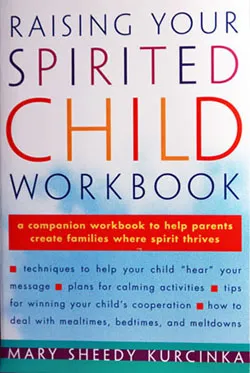Don’t Leave Me!

Do not leave me. Stay with me. I do not want to go to school today! Sleep with me. Let me sit on your lap. Carry me. Do not go upstairs without me. Do not leave me at child care – even though I loved it last week. What do you do when your child suddenly does not want you out of her sight?
1. Recognize the behaviors for what they are:
These challenging behaviors reflect the “red zone” response of “gather me in.” It’s a primal reaction to threat. Children intuitively know they are small and virtually helpless. When stressed their brain reacts in the same manner to you departing the room, as to a tiger posed to leap upon them. All neurons scream, “Do not leave me! Gather me in! Protect me!” Fighting to stay close to those who can keep them safe becomes the number one priority. Adapting and changing your strategies to meet children’s needs does not mean you will be “coddling” them forever. Once they feel safe again, your independent little ones will be back!
2. Identify the fuel source:
Gather me in behaviors are tricky. How do you distinguish whether they truly are a sign your child is stressed, if it is a test of limits, or your child is working through a new skill – like learning to separate?
A “red flag” for “gather me in” reactions is a sudden change in your child’s confidence and abilities. For example: The child who successfully falls asleep on his own, abruptly can’t. Dressing independence disappears, replaced with a rag doll who finds it impossible to get a sock on without assistance. Previously unconcerned about your departure from the classroom doorway your child is now clinging to your leg, begging you to stay.
But sometimes even a sudden shift in abilities could still be a test of limits, or the normal angst about learning a new skill. If the behavior is truly a “gather me in” response it will be pervasive. It won’t occur just at bedtime, but will also be true at school drop off and even a visit to a friend’s house.
If this is the case then ask yourself a few questions. “When did this begin?” “What has happened?” “What could be going on?” There are many likely causes.
Infants and toddlers experience developmental stages of separation anxiety at nine, twelve, eighteen and twenty four months. Other common fuel sources can be a parent traveling, illness, a change in staff at school or child care, conflicts with peers, a stressed caregiver or teacher. Take the time to identify the real fuel source so that you can select the most effective strategies to make it better.
3. Check your confidence level about the situation:
If, for example your child is balking about school ask yourself, “Do you believe that this is a good fit for him? Do you believe that he is emotionally and physically safe with his teacher?” If you doubt your choice, or feel ambivalent your child will pick up your angst and react accordingly. But if you are confident that this is a good place for him and while you can empathize that leaving home may be difficult, it is important for him to go, he will sense your confidence, be relieved and resist less.
If it is difficult for you to determine your confidence level think about your child’s car seat. It is likely that he resisted being strapped in, yet you knew that for him to be safe he needed to be in it. No doubt in your mind. Your confidence in that decision allowed you to work him through any difficulties. Garner that same confidence for these situations.
4. Lower expectations:
While it may be clear that your child does need to fall asleep, go to school or dress, it is also important to allow that right now he is stressed and needs a bit more assistance from you. Maintain your routines. Do not throw them out thinking that they no longer work. Routines provide the security of predictability. Instead add more soothing and calming tools to them. If you rock your child a few minutes before he goes into his crib, plan to rock a bit longer allowing him the extra time he needs to relax. Increase touch; hugs, massage or cuddling while reading. Touch sends soothing, calming hormones into the system.
5. Be proactive:
Before your child screams at you demanding that you return to a room say to him, “I am going to leave the room now. Do you want to come with me or stay and play?” If he says he needs to come with you wait for him and add, “Okay, I will wait for you. Pretty soon you’ll be comfortable staying to play.” One day he will! If you sneak out or simply forget to ask before you leave, you break trust and will have to begin again to rebuild it.
6. Make directions and expectations concrete:
Even if you have told your child that you will pick him at school, the neuro static created by stress makes it impossible for him to remember. Together create a visual plan. Lay it out like a four to six frame cartoon. In each frame place a symbol of what will happen. For example, he will have lunch, nap, eat snack and when the clock says 4:00 you’ll be there to pick him up. Let him keep it in his pocket to check whenever he feels the need.
A “gather me in” response is a normal reaction to fear and stress. Your child will check to make certain you are there to help him. You have his back. He can count on you. If you sense this is the case, before dropping him off at school take an extra few minutes for that cuddle time, but then follow your normal routine. Initially he may still cry, assure yourself that you have been there for him, given extra support and now confidently believe he is in a safe place, has the skills to do this and supportive teachers to help. Your confidence will increase his confidence and soon things will be back to normal.
Display All Posts
Search by Topic:
Popular Posts:
- When your child yells at you: Expecting and Coaching respectful behavior
- 5 Tips to Stop the 'Strike out Tantrums:' Hitting, Biting, Kicking and Name-calling
- Why is my child suddenly clingy?
- Ten Steps to a Peaceful Bedtime for Your Spirited Child
- When Your Child’s Meltdowns are Ruining Vacation






